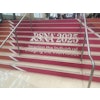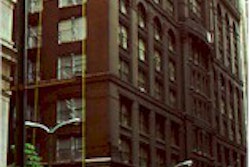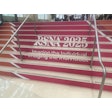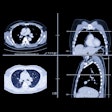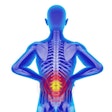CHICAGO – A nationwide survey of hospitals shows that use of high-dose-rate afterloading brachytherapy for treatment of prostate cancer is growing rapidly in the United States.
Dr. Phillip Devlin, MD, director of brachytherapy at Brigham and Women's Hospital, Boston, said 43 centers in the U.S. are performing HDR prostate brachytherapy and 26 more centers expect to begin doing so by the end of 2001.
According to the three major manufacturers, there are 453 HDR afterloader units in the U.S., 363 from Nucletron of Columbia, MD, which supported the study with an unrestricted grant. Devlin said neither he nor his co-investigators have financial holdings in any of the companies.
HDR remote afterloaders give radiation oncologists computerized control of the amount of radiation delivered to tumor-bearing and normal tissue. In a presentation at this week’s RSNA meeting, Devlin said the survey found that 2,152 patients had received HDR prostate brachytherapy at least two years ago, and another 744 patients received the treatment within the last two years.
Devlin said his survey found that, in general, centers offering boost HDR prostate brachytherapy aimed the treatment at patients with a PSA greater than 10, a Gleason score 7 or greater, tumor Stage T2b or higher and favorable anatomy.
For monotherapy, the general use was a PSA up to 10, Gleason score up to 6, stage from small up to T2a, and favorable anatomy. The usual dose of radiation -- at two-thirds of the centers -- was 600 centigray times three. Devlin did not collect outcome data in his survey.
Devlin said that the survey found wide heterogeneity in the use of brachytherapy among the treatment centers.
"We are seeing more and more people asking us for information about brachytherapy," Devlin said. "The tell us, 'I've searched the Internet...’ and found information about brachytherapy."
The increasing interest appears to be consumer-driven and Internet-driven, said Devlin, an instructor in radiation oncology at the Harvard Medical School.
However, being consumer-driven is not always a good thing, said Dr. David Beyer, a clinical lecturer at the University of Arizona. "It is really good that people are educated," Beyer said, "but sometimes patients will fixate on some unimportant detail. The problem with information on the Internet is that it comes through unfiltered. Some facts can be misleading."
Beyer said that while brachytherapy was, a few years ago, consumer-driven, doctors have begun to realized the effectiveness of the treatment and now more of the patients he sees are referrals from other physicians.
By Edward Susman
AuntMinnie.com contributing writer
November 27, 2000
Dr. Phillip Devlin, MD, director of brachytherapy at Brigham and Women's Hospital, Boston, said 43 centers in the U.S. are performing HDR prostate brachytherapy and 26 more centers expect to begin doing so by the end of 2001.
According to the three major manufacturers, there are 453 HDR afterloader units in the U.S., 363 from Nucletron of Columbia, MD, which supported the study with an unrestricted grant. Devlin said neither he nor his co-investigators have financial holdings in any of the companies.
HDR remote afterloaders give radiation oncologists computerized control of the amount of radiation delivered to tumor-bearing and normal tissue. In a presentation at this week’s RSNA meeting, Devlin said the survey found that 2,152 patients had received HDR prostate brachytherapy at least two years ago, and another 744 patients received the treatment within the last two years.
Devlin said his survey found that, in general, centers offering boost HDR prostate brachytherapy aimed the treatment at patients with a PSA greater than 10, a Gleason score 7 or greater, tumor Stage T2b or higher and favorable anatomy.
For monotherapy, the general use was a PSA up to 10, Gleason score up to 6, stage from small up to T2a, and favorable anatomy. The usual dose of radiation -- at two-thirds of the centers -- was 600 centigray times three. Devlin did not collect outcome data in his survey.
Devlin said that the survey found wide heterogeneity in the use of brachytherapy among the treatment centers.
"We are seeing more and more people asking us for information about brachytherapy," Devlin said. "The tell us, 'I've searched the Internet...’ and found information about brachytherapy."
The increasing interest appears to be consumer-driven and Internet-driven, said Devlin, an instructor in radiation oncology at the Harvard Medical School.
However, being consumer-driven is not always a good thing, said Dr. David Beyer, a clinical lecturer at the University of Arizona. "It is really good that people are educated," Beyer said, "but sometimes patients will fixate on some unimportant detail. The problem with information on the Internet is that it comes through unfiltered. Some facts can be misleading."
Beyer said that while brachytherapy was, a few years ago, consumer-driven, doctors have begun to realized the effectiveness of the treatment and now more of the patients he sees are referrals from other physicians.
By Edward Susman
AuntMinnie.com contributing writer
November 27, 2000
Copyright © 2000 AuntMinnie.com
Click here to view the rest of AuntMinnie’s coverage of the 2000 RSNA conference.
Click here to post your comments about this story.
